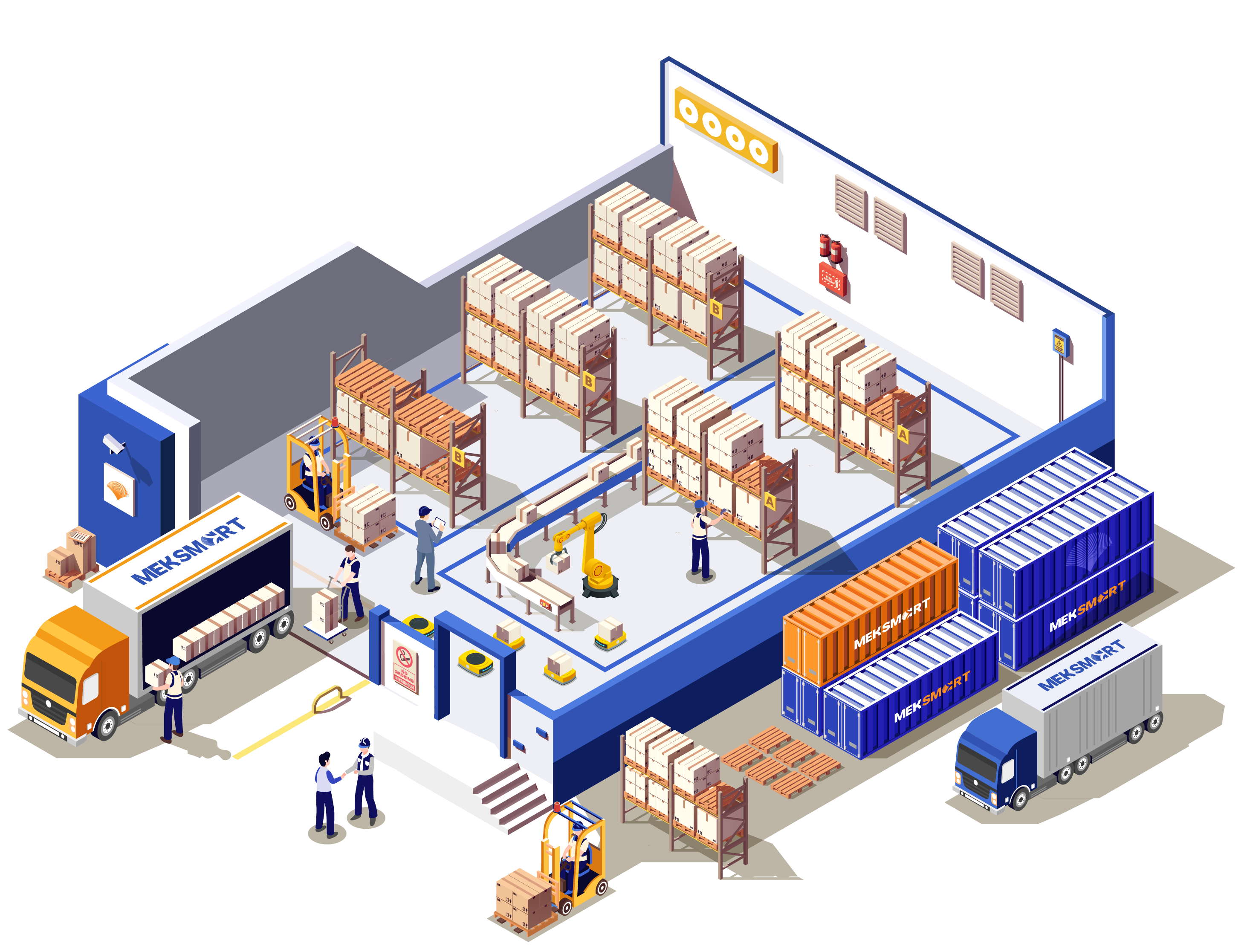MEKSMART
GENERAL NEWS
Author:
Update: 15/12/2022
COMMON ORDER PICKING METHODS IN STOCK
Order Picking – Picking is one of the most important processes, accounting for 55% of warehouse operating costs and consuming the most manpower. Due to the direct impact of Order Picking on customer satisfaction, coupled with high operating costs, companies understand which picking methods are right for their organization and how best to implement them to improve their Supply Chain...

1. Common Order Picking methods in Warehouse management:
Single Order Picking:
- The simplest and most common method: Products are permanently stored on racks or pallets.
- Workers take orders at a time according to the route along the aisle until the entire order is completed.
*Note:
- The design of the picking flow must make the worker's final destination close to the starting point. The material to be picked up must be arranged in the same order as the picking flow.
- Fast-moving consumer goods should be stored near main aisles and intersections between stalls. Larger groups of goods will be stored at the end of the road.
- This basic picking method can work well in organizations with small total order volumes and high picks per order. Operations with low Picks per order will take a long time to travel, and operations with large orders will cause congestion because many workers working in the same area slow down processing...
Batch Picking / Multi-Order Picking
- Multiple orders grouped into a small batch. Each worker will select all orders in a batch at once, via an aggregated fetch list.
- Workers will often use multi-tiered picking carts to differentiate orders. A batch consists of 4 – 12 orders, depending on the average number of picks. Advanced systems can use programming logic to merge orders for the same item. With low picks per order, Batch picking can significantly reduce travel time, allowing workers to pick multiple products in the same area. Since multiple orders must be selected at once, systems and processes will be required to avoid mixing orders.
- During busy schedules, batch picking is often used in combination with zone picking and automated material handling equipment. For maximum productivity, orders must be accumulated in the system until there are enough similar picks to create batches.
Zone Picking / Chain version of Order Picking
- The pick-up area is divided into individual selections. Employees are assigned to a specific area and only pick up items in that area. Orders are moved from one area to the next until the order is fulfilled (so Zone Picking is also known as Pick and Pass).
*Note:
- Usually, the organization will use a conveyor system to move orders.
- In each area, it is necessary to have a balanced number of selections from one area to another to maintain a steady flow. The area of the areas should be just enough for 1-2 workers to work.
- Arrange picking areas close to conveyors to increase productivity. Zone picking is best suited for large movements with high SKUs, high total orders, and mid-range Picks per order.
- Separate areas require specialized selection techniques such as automatic material handling in one area and manual handling in the next.
Ware Picking
- A variation of Zone picking and Batch picking, but all zones are picked at once, then sorted and consolidated into individual orders/lots.
Wave picking is the fastest method (i.e. shortest cycle) for picking orders with multiple products, but the sorting and consolidation process can be difficult. - Orders with high total SKU and Picks per order in the medium-high range are very suitable for Wave picking. It can also be used to isolate orders by specific carriers, routes, or regions.
Source: vilas.edu.vn







